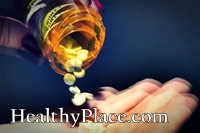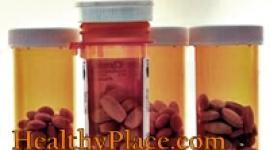Ritalin Abuse
Ritalin is not addictive when taken as prescribed by doctors. But there is a high level of Ritalin abuse. 30-50% of adolescents in drug treatment centers report abusing Ritalin. (Source: University of Utah Genetic Learning Center)
Methylphenidate (Ritalin) is a medication prescribed for individuals (usually children) who have attention-deficit hyperactivity disorder (ADHD), which consists of a persistent pattern of abnormally high levels of activity, impulsivity, and/or inattention that is more frequently displayed and more severe than is typically observed in individuals with comparable levels of development. The pattern of behavior usually arises between the ages of 3 and 5, and is diagnosed during the elementary school years due to the child's excessive locomotor activity, poor attention, and/or impulsive behavior. Most symptoms improve during adolescence or adulthood, but the disorder can persist or present in adults. It has been estimated that 3-7 percent of school-age children have ADHD. Ritalin also is occasionally prescribed for treating narcolepsy.
Health Effects
 Methylphenidate is a central nervous system (CNS) stimulant. It has effects similar to, but more potent than, caffeine and less potent than amphetamines. It has a notably calming and "focusing" effect on those with ADHD, particularly children.
Methylphenidate is a central nervous system (CNS) stimulant. It has effects similar to, but more potent than, caffeine and less potent than amphetamines. It has a notably calming and "focusing" effect on those with ADHD, particularly children.
Recent research at Brookhaven National Laboratory may begin to explain how Ritalin helps people with ADHD. The researchers used positron emission tomography (PET—a noninvasive brain scan) to confirm that administering normal therapeutic doses of methylphenidate to healthy, adult men increased their dopamine levels. The researchers speculate that methylphenidate amplifies the release of dopamine, a neurotransmitter, thereby improving attention and focus in individuals who have dopamine signals that are weak.1
Methylphenidate is a valuable medicine, for adults as well as children with ADHD.2, 3, 4 Treatment of ADHD with stimulants such as Ritalin and psychotherapy help to improve the abnormal behaviors of ADHD, as well as the self-esteem, cognition, and social and family function of the patient.2 Research shows that individuals with ADHD do not become addicted to stimulant medications when taken in the form and dosage prescribed by doctors. In fact, it has been reported that stimulant therapy in childhood is associated with a reduction in the risk for subsequent drug and alcohol use disorders.5, 6 Also, studies have found that individuals with ADHD treated with stimulants such as methylphenidate are significantly less likely than those who do not receive treatment to abuse drugs and alcohol when they are older.7
Because of its stimulant properties, however, in recent years there have been reports of abuse of Ritalin by people for whom it is not prescribed. It is abused for its stimulant effects: appetite suppression, wakefulness, increased focus/attentiveness, and euphoria. Addiction to methylphenidate seems to occur when it induces large and fast dopamine increases in the brain. In contrast, the therapeutic effect is achieved by slow and steady increases of dopamine, which are similar to the natural production by the brain. The doses prescribed by physicians start low and increase slowly until a therapeutic effect is reached. That way, the risk of addiction is very small.8 When abused, the tablets are either taken orally or crushed and snorted. Some abusers dissolve the Ritalin tablets in water and inject the mixture; complications can arise from this because insoluble fillers in the tablets can block small blood vessels.
Trends in Ritalin Abuse
Monitoring the Future (MTF) Survey *
Each year, MTF assesses the extent of drug use among adolescents and young adults nationwide. MTF 2004 data on annual** use indicate that 2.5 percent of 8th-graders abused Ritalin, as did 3.4 percent of 10th-graders and 5.1 percent of 12th-graders.
Other Studies
ADHD has been more frequently reported in boys than in girls; however, in the last year, the frequency among girls has greatly increased.9
A large survey at a public university showed that 3 percent of the students had used methylphenidate during the past year.10
Other Information Sources
Because stimulant medicines such as Ritalin do have potential for abuse, the U.S. Drug Enforcement Administration (DEA) has placed stringent, Schedule II controls on their manufacture, distribution, and prescription. For example, DEA requires special licenses for these activities, and prescription refills are not allowed. The DEA web site is www.usdoj.gov/dea/. States may impose further regulations, such as limiting the number of dosage units per prescription.
* These data are from the 2004 Monitoring the Future Survey, funded by the National Institute on Drug Abuse, National Institutes of Health, DHHS, and conducted by the University of Michigan's Institute for Social Research. The survey has tracked 12th-graders' illicit drug use and related attitudes since 1975; in 1991, 8th- and 10th-graders were added to the study. The latest data are online at www.drugabuse.gov.
** "Lifetime" refers to use at least once during a respondent's lifetime. "Annual" refers to use at least once during the year preceding an individual's response to the survey. "30-day" refers to use at least once during the 30 days preceding an individual's response to the survey.
Sources:
1 Volkow, N.D., Fowler, J.S., Wang, G., Ding, Y., and Gatley, S.J. (2002). Mechanism of action of methylphenidate: insights from PET imaging studies. J. Atten. Disord., 6 Suppl. 1, S31-S43.
2 Konrad, K., Gunther, T., Hanisch, C., and Herpertz-Dahlmann, B. (2004). Differential Effects of Methylphenidate on Attentional Functions in Children With Attention-Deficit/Hyperactivity Disorder. J. Am. Acad. Child Adolesc. Psychiatry, 43, 191-198.
3 Faraone, S.V., Spencer, T., Aleardi, M., Pagano, C., and Biederman, J. (2004). Meta-analysis of the efficacy of methylphenidate for treating adult attention-deficit/hyperactivity disorder. J. Clin. Psychopharmacology, 24, 24-29.
4 Kutcher, S., Aman, M., Brooks, S.J., Buitelaar, J., van Daalen, E., Fegert, J., et al. (2004). International consensus statement on attention-deficit/hyperactivity disorder (ADHD) and disruptive behaviour disorders (DBDs): Clinical implications and treatment practice suggestions. Eur. Neuropsychopharmacol., 14, 11-28.
5 Biederman, J. (2003). Pharmacotherapy for attention-deficit/hyperactivity disorder (ADHD) decreases the risk for substance abuse: findings from a longitudinal follow-up of youths with and without ADHD. J. Clin. Psychiatry, 64 Suppl. 11, 3-8.
6 Wilens, T.E., Faraone, S.V., Biederman, J., and Gunawardene, S. (2003). Does stimulant therapy of attention-deficit/hyperactivity disorder beget later substance abuse? A meta-analytic review of the literature. Pediatrics, 111, 179-185.
7 Mannuzza, S., Klein, R.G., and Moulton, J.L., III (2003). Does stimulant treatment place children at risk for adult substance abuse? A controlled, prospective follow-up study. J. Child Adolesc. Psychopharmacol., 13, 273-282.
8 Volkow, N.D. and Swanson, J.M. (2003). Variables that affect the clinical use and abuse of methylphenidate in the treatment of ADHD. Am. J. Psychiatry, 160, 1909-1918.
9 Robison, L.M., Skaer, T.L., Sclar, D.A., and Galin, R.S. (2002). Is attention deficit hyperactivity disorder increasing among girls in the US? Trends in diagnosis and the prescribing of stimulants. CNS Drugs, 16, 129-137.
10 Teter, C.J., McCabe, S.E., Boyd, C.J., and Guthrie, S.K. (2003). Illicit methylphenidate use in an undergraduate student sample: prevalence and risk factors. Pharmacotherapy, 23, 609-617.
next: Parenting an ADHD Child is Exhausting
~ adhd library articles
~ all add/adhd articles
APA Reference
Staff, H.
(2005, March 2). Ritalin Abuse, HealthyPlace. Retrieved
on 2025, December 24 from https://www.healthyplace.com/adhd/articles/ritalin-abuse-abuse-of-ritalin

